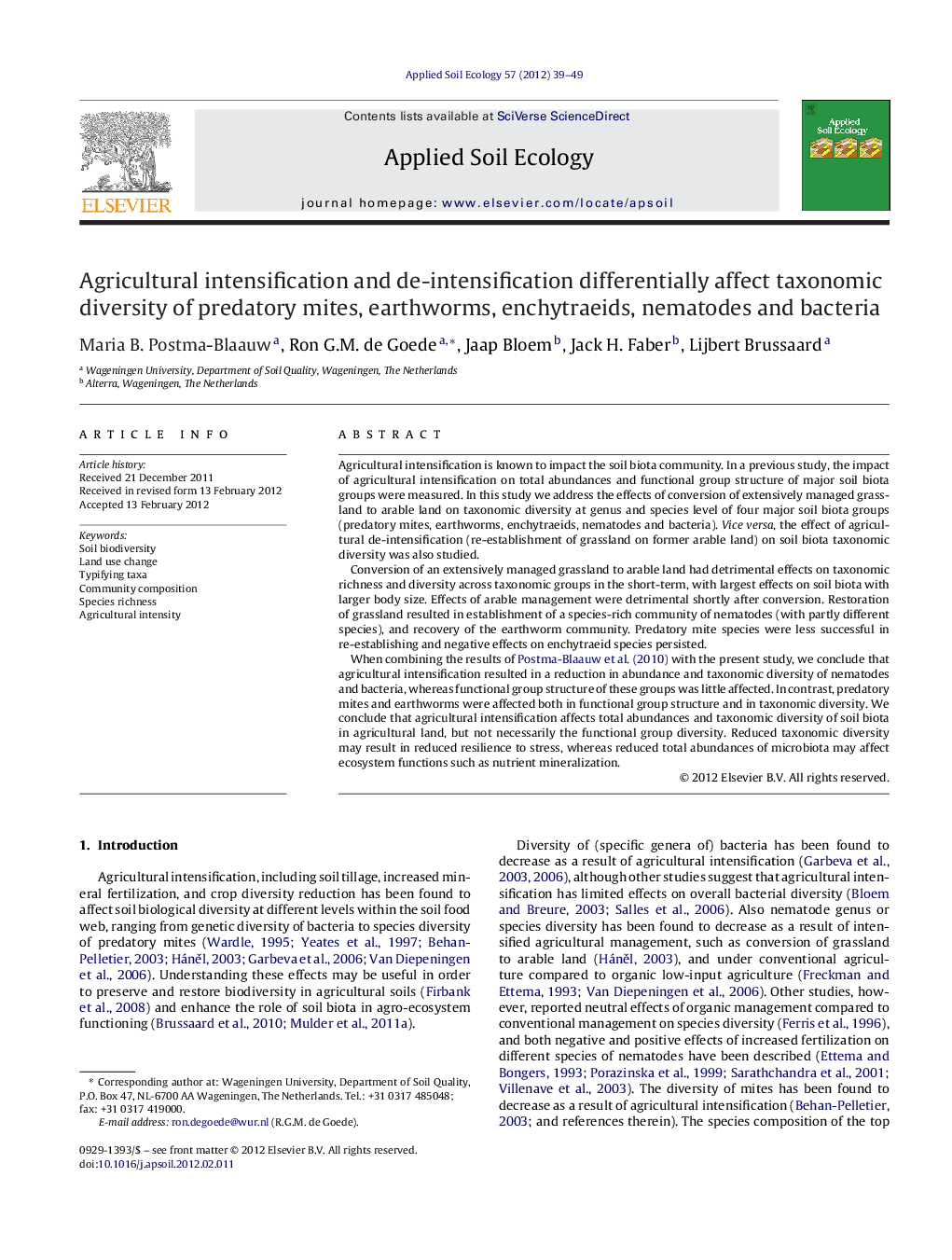| کد مقاله | کد نشریه | سال انتشار | مقاله انگلیسی | نسخه تمام متن |
|---|---|---|---|---|
| 4382624 | 1617826 | 2012 | 11 صفحه PDF | دانلود رایگان |

Agricultural intensification is known to impact the soil biota community. In a previous study, the impact of agricultural intensification on total abundances and functional group structure of major soil biota groups were measured. In this study we address the effects of conversion of extensively managed grassland to arable land on taxonomic diversity at genus and species level of four major soil biota groups (predatory mites, earthworms, enchytraeids, nematodes and bacteria). Vice versa, the effect of agricultural de-intensification (re-establishment of grassland on former arable land) on soil biota taxonomic diversity was also studied.Conversion of an extensively managed grassland to arable land had detrimental effects on taxonomic richness and diversity across taxonomic groups in the short-term, with largest effects on soil biota with larger body size. Effects of arable management were detrimental shortly after conversion. Restoration of grassland resulted in establishment of a species-rich community of nematodes (with partly different species), and recovery of the earthworm community. Predatory mite species were less successful in re-establishing and negative effects on enchytraeid species persisted.When combining the results of Postma-Blaauw et al. (2010) with the present study, we conclude that agricultural intensification resulted in a reduction in abundance and taxonomic diversity of nematodes and bacteria, whereas functional group structure of these groups was little affected. In contrast, predatory mites and earthworms were affected both in functional group structure and in taxonomic diversity. We conclude that agricultural intensification affects total abundances and taxonomic diversity of soil biota in agricultural land, but not necessarily the functional group diversity. Reduced taxonomic diversity may result in reduced resilience to stress, whereas reduced total abundances of microbiota may affect ecosystem functions such as nutrient mineralization.
► We studied effects of land use change on taxonomic diversity of 5 soil biota groups.
► Long-term grassland was converted in arable land (i.e. intensification) and vice versa.
► Intensification had largest effects on larger soil biota and higher trophic groups.
► Restoration of grassland selectively stimulated taxonomic diversity.
► Nematodes and earthworms recovered, but not predatory mites and enchytraeids.
Journal: Applied Soil Ecology - Volume 57, June 2012, Pages 39–49